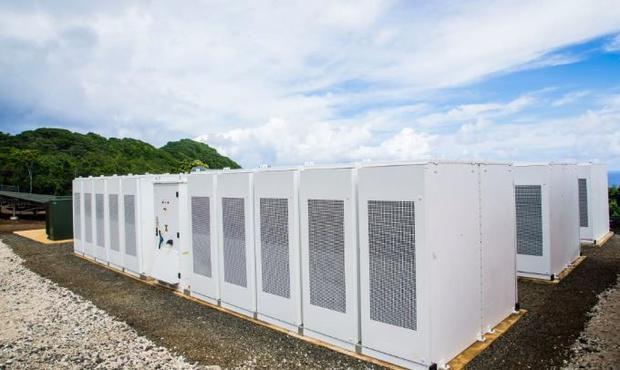Basically, within the next twenty years, we can expect to see innovations in the energy industry that will affect every part of the “source-to-consumer” supply chain that powers the planet. Innovations in storing energy will make wind and solar power more affordable and improve reliability 24 hours a day, every day.
The development of smart grids to regulate the movement of electricity efficiently through our cities and states will ensure that crippling blackouts will soon become a thing of the past. And developments in generating electricity will make sure we get the most out of our fossil fuels and renewable energy resources.
Digital Journal will take a look at the progress being made in the development of five technologies that will change the face of the energy industry over the next twenty years. In Part 1, we will examine how far along we have come in energy storage.
1. Fuel Cells: A fuel cell converts the chemical energy from a fuel source into electricity through a reaction using positively charged Hydrogen ions with oxygen or another oxidizing agent. Fuel cells are different from batteries because, in a battery, chemicals present in the battery react with each other to generate an electromotive force (emf). Fuel cells, on the other hand, can generate electricity continuously as long as hydrogen and an oxidizing agent is being supplied.
Three truck manufacturers Kenworth, Toyota, and UPS are currently working on investing in fuel cell technologies. One of the major problems facing fuel cell vehicles (FCV), whether they are long-haul trucks or vehicles is that in order to create hydrogen requires using fossil fuels.
However, when hydrogen is created from renewable energy sources, it is a win-win for everyone. You essentially have a clean fuel that emits nothing but water vapor and heat. And it is these technologies that have been making inroads in fuel cell innovations. Peter Devlin, a project manager with the fuel cell technologies office at the U.S. Department of Energy says there are a number of applications in fuel cell technology.
“We’re testing a lot of prototypes with automakers, and they can stand up to many conditions,” Devlin said. “All these different applications help build a supply base, which is what is needed to get the cost of the technology down.”
In Europe, fuel cell technology has made great headway, and soon, UK-based Intelligent Energy production facilities will be pumping out 50,000 fuel cell stacks by the year 2020, making the company an energy leader in bringing green energy to the average consumer. That’s just a few years down the road.
2. Lithium-air batteries: These storage batteries are also called Lithium-oxygen fuel cells. The technology has been around since the 1970s and was first proposed as a possible source of power for battery electric cars and hybrid electric vehicles. The technology had two instabilities that prevented it moving forward – Short-circuiting at inopportune times and a short battery life.
And while the technology languished around in labs drawers for nearly three decades, in the latter part of 2000, interest in Li-batteries was renewed due to innovations in materials science, an interdisciplinary field that involves the discovery of new materials.
A powerful driver in the development of lithium-air batteries has been the automotive industry, and it’s going to take innovations in a multitude of fields before commercial application succeeds. And today’s battery models show a poor resistance to oxidation, a problem that has to be worked out.
As a source of energy storage, a hybrid solar cell battery was announced by researchers in 2014. It is known that almost 20 percent energy produced by solar cells is lost as it travels to and charges a battery. But in a hybrid solar cell battery, 100 percent of the energy is stored.
The solar cell uses a mesh made of microscopic rods of titanium dioxide that allow oxygen to pass through. Captured sunlight produces electrons that decompose lithium peroxide into lithium ions. This reaction basically charges the battery. During discharge, oxygen from air replenishes the lithium peroxide.
In Part 2, we will take on the smart grid and innovations in the technology that will lead to the installation of smart meters in every household and building.
















